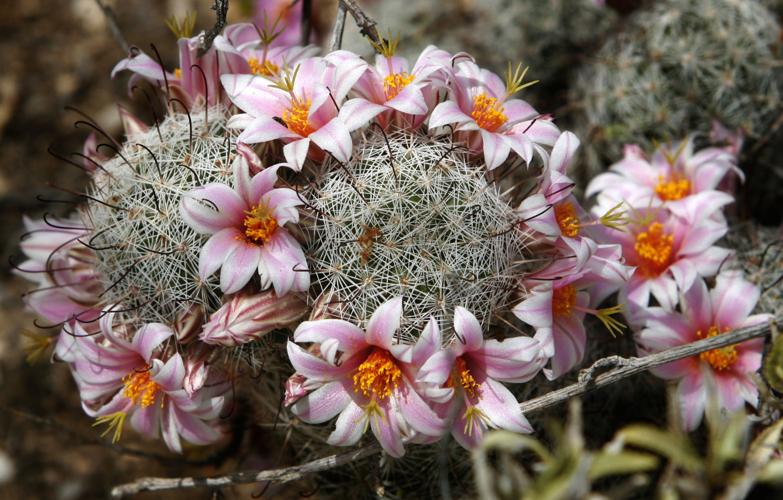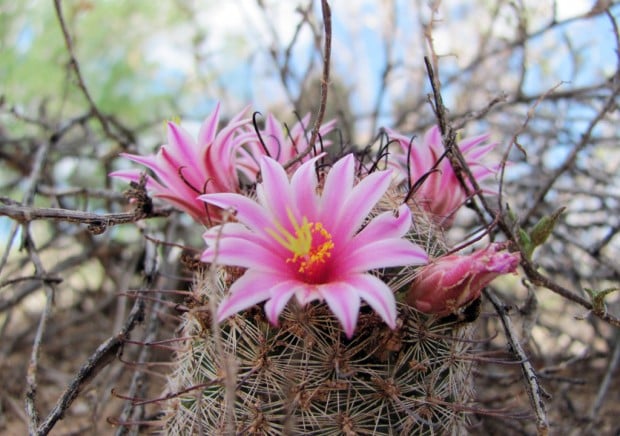We picked the native pincushion cactus because sometimes, if it's warm, they can bloom in February.
Hahahaha. Everyone saw the snow yesterday, right??
A few are in bloom but that means we could be waiting until the spring/summer to see most of these cacti crowned with beautiful pink flowers.
Until then, here are three things to know about the native mammillaria grahamii, or the pincushion cactus.
1. So many names

A pincushion cactus, nurtured by monsoon rains, is in brilliant bloom in the Catalina Foothills on Tuesday, July 18. Photo by Doug Kreutz, Arizona Daily Star.
Commonly known as the pincushion cactus, mammillaria grahamii also goes by Graham fishhook (fishhook because of the spines) or the nipple cactus (don't giggle). In Spanish it's known as cabeza de viejo or old man's head (OK, you can giggle).
This genus of cactus (mammillaria) is common, with around 170 species around the world. You can find mammillaria grahamii all over Southern Arizona — but because of "its petite size and tendency to grow in and under grasses and shrubs, it is often overlooked," says Adam Farrell-Wortman, the horticulture manager at the Tucson Botanical Gardens. "This is one of the most likely (cacti) to be stepped on." Maybe we should call it the Lego cactus. 😂
2. It doesn't do full sun.

A Mammillaria grahamii at the Tucson Botanical Gardens.
Look for this lady growing in clusters under desert shrubs, cholla or palo verde trees.
"These cacti, like most, like dappled shade and need well-draining soil," says Farrell-Wortman. "They can grow in deep shade. They grow really well in rock gardens or at the base of trees and shrubs."
3. It knows how to put on a show.

Pincushion cacti flowers are brilliant pink.
We already mentioned the flower crown — the pincushion cactus mostly blooms in early spring and summer and loves rain. The flowers, lavender to pink in color, often bloom in a circle just below the cactus' apex.
These cacti grow in clusters or on their own, about 6 inches in height and 2 inches in diameter. You can identify them by their hooked spines.
"They have two layers of spines," Farrell-Wortman says. "The under layer looks like a net and provides sun protection and the outer layer is like little fishing hooks providing for the plant's defense." Grr.
They produce edible, bright red fruit that look kinda like chili peppers — but no spice here. We've heard these compared to strawberries (if you can get past the spines!). If you try them, tell us what you think!
Sources: Arizona Sonora-Desert Museum fact page on mammillaria; Americansouthwest.net, a resource about the landscapes of national parks and the "Field Guide to Cacti and Other Succulents of Arizona" by Peter Breslin, Rob Romero, Greg Starr and Vonn Watkins.








